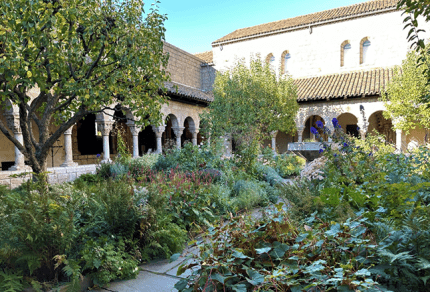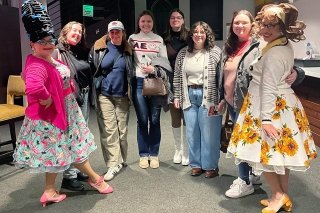NYC trip gives English students a new perspective on the Middle Ages
Bloomsburg
Posted

A group of Commonwealth University-Bloomsburg students studying British Literature and Culture traveled this fall to New York City with their English professor to explore the Metropolitan Museum of Art and The Cloisters, bringing their studies on “The Body and the Soul in Medieval Literature” to life.
"Our trip was designed to give students an immersive experience with medieval artifacts," said Christina Francis, professor. "Seeing relics, armor, and devotional objects in person allowed them to make meaningful connections with what we study in class."

The students explored rooms filled with medieval art and artifacts, soaking in details that resonated with their coursework. One of Sean Dunne’s favorite parts was a room dedicated entirely to depictions of the Virgin Mary and Christ.
"This room was incredibly moving, especially the portrayals of the grieving Mary,” said Dunne, an English major. “The gardens were also breathtaking, with original pillars from Europe and plants native to medieval Europe — it felt like stepping into the past.”
Francis's guidance led the students to unexpected, enriching moments. They discovered hidden details in the museum’s architecture that captured the spirit of the era and even had the chance to hear live medieval music being practiced in the Cloisters' church area.
For Alaina Hostetter, an English literature major, the visit became an opportunity to connect her studies with her research on medieval texts.
"Seeing an actual Book of Hours at The Cloisters was amazing," she said. "It was tiny but seeing it in person gave me a real sense of its purpose and value. It made my research feel much more significant."
Reflecting on the experience, Francis emphasized the importance of such trips in making the past feel accessible and tangible.
“The Middle Ages is separated from my students by centuries and cultural differences, but visiting museums like these helps them feel a real connection,” she said. “It makes what we study more real and memorable.”

For Dunne, these moments weren’t just informative; they deepened his relationship with the material.
“The Cloisters brought our coursework to life,” Dunne noted. “Seeing reliquaries and triptychs in person made them much more real. The Christian imagery we’ve studied was everywhere and experiencing it firsthand was incredible.”
The students left inspired, seeing the Middle Ages from a perspective that went beyond textbooks and lectures.
As Alaina put it, “Experiences like this remind us why studying history and literature matters. You see, the people we read about weren’t so different from us.”


